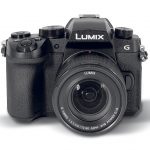
Sigma 70-200mm f/2.8 DG OS HSM Sports test: is bigger better?
Posted on Jul 17, 2019
Sigma’s 70-200mm f/2.8 DG OS HSM Sport completes the company’s line-up of cutting-edge f/2.8 zooms, and it’s available in Canon, Nikon and Sigma mounts. On paper, its features put it on par with the Canon and Nikon versions, but the 70-200mm f/2.8 DG OS HSM Sport costs a lot less. It’s £1349, undercutting the Canon EF 70-200mm f/2.8 L IS III and Nikon 70-200mm f/2.8E VR by over £700. But can it compete in build, handling and results? Broadly, yes. It packs a tremendous punch compared to its price tag.
The lens’s build is excellent, with a brass mount, magnesium alloy barrel and bags of weather sealing, but this comes at a cost in weight. At 1800g it’s well above the Canon and Nikon competitors. But its weight is really all there is to criticise.
Despite the heft, it handles quite well, with a large, grippy zoom ring. If you’re a Nikon user like me, you might occasionally forget it turns the ‘wrong’ way when composing, but, at less than 90º, the throw is short enough for this not to be a problem. Behind the zoom are three function buttons. Defaulting to AF lock, these can be customised to other functions like AF-On, or specific AF modes, and worked faultlessly with the D850 I used for testing.
The 70-200mm f/2.8 Sport includes a tripod collar with a handy Arca-compatible foot, but though the latter can be removed using an included Allen key, the ring itself can’t be. That’s a pity, as it might have shaved a few grams off the weight, and support isn’t as vital on a 70-200mm as longer lenses. I also found the foot got in the way as I moved my hand towards the manual focus ring.

The lens felt well balanced on a big DSLR body like the Nikon D850 with MB-D18 grip. On smaller bodies, it felt quite front heavy, but not problematically so. The advantage of using it on an APS-C sensor is you’re getting a 105-300mm f/2.8, which is quite a tasty prospect.
At the long end, I’d expect to shoot handheld with confidence at 1/200sec, but with the Optical Stabiliser’s four-stop advantage, I got almost all shots sharp at 1/13sec, accounting for subject blur. It’s possible to go slower still, and I got sharp results down to 1/4sec, but the hit rate will drop depending on your handling skills and subject. There’s an OS mode for panning, accessible from the lens barrel, too.
AF performance is excellent, locking on and holding moving subjects in focus with the tenacity you’d expect from a pro lens, and it’s speedy, moving from near to far with a real snap. AF is also quiet, so potentially usable in discrete situations. Minimum focus is 1.2m, the same as the Canon version, but gives up 10cm to the Nikon f/2.8E. That doesn’t sound a lot, but could mean the difference between grabbing a shot and having to move your feet. AF can be limited to 3m to infinity if you have foreground obstructions, and along with AF and MF there’s an MO mode, where the manual focus ring overrides AF. The MF ring operates perfectly, with a long throw that improves accuracy when making minor adjustments.
Image quality is excellent. The lens uses nine FLD (Fluorite Low Dispersion) and one SLD (Special Low Dispersion) elements, and their effect is clear. For one thing, there’s almost no sign of fringing, and though there is some vignetting, particularly wide open, it’s mostly gone by f/5. Flare is minimal, although we did get a few blooms shooting in the sun, but contrast is kept high thanks to the coated elements.
We found sharpness excellent, too. In the centre, at 70mm, it’s brilliant wide open, hits a peak around f/5.6, and tails slowly off from there, but it’s still really good even past f/11. In the corners it’s less good, but not by much, peaking from f/4 to f/8. At 135mm, the lens seemed sharpest wide open, and improved in the corners to f/8. It was a similar story at 200mm, with the lens being sharpest from f/2.8 to f/5.6 right where you want it.
Click the images to see a larger view
Verdict
Pros: Image quality, AF, build, price
Cons: High weight, can’t remove tripod collar
The Sigma 70-200mm f/2.8 DG OS HSM Sport is a high-quality, versatile and comparatively affordable lens when you consider the big name competition. It’s exceptionally well made, handles nicely and gives beautifully sharp pictures at every stage of its zoom. The weight may be an issue for some, but it depends on your shooting style. That said, I did find it more of a drag for extended shooting than I did the Nikon version. Overall, it’s highly recommended.
For more information, please visit the Sigma website.
As featured in issue 68 of Photography News.

























